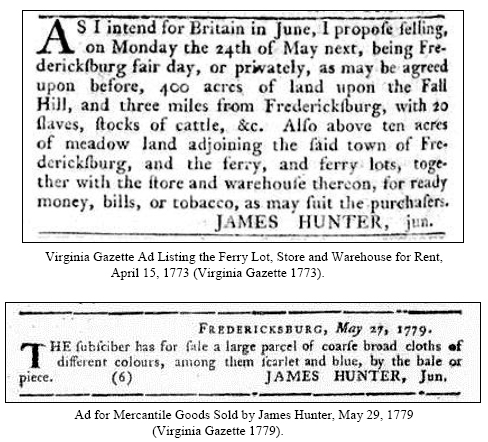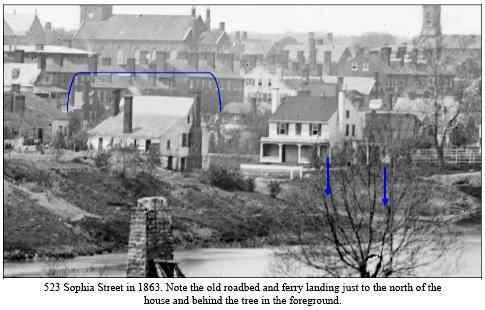For my fellow booze-hounds
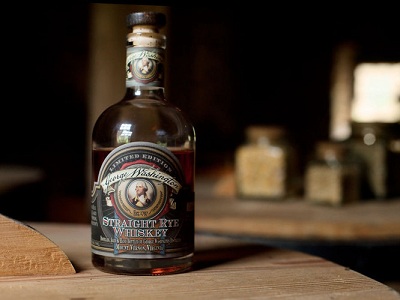
During his second term, President George Washington worked closely with the newly formed United States Marshals Service to quell an uprising known as “The Whiskey Rebellion.” This short-lived revolt was instigated by a volatile resistance that refused to pay federal taxes on whiskey. An accomplished distiller himself, Washington had a deep, personal interest in the manufacture and sales of the alcohol. In 1798, the year before his death, Washington’s distillery at Mount Vernon produced 11,000 gallons of whiskey and netted a profit of $7,500. That was an enormous sum of money over 200 years ago. By 1799, Mount Vernon’s whiskey distillery was the most productive and profitable aspect of Washington’s plantation. At one point, the demand for this special blend outweighed the distillery’s ability to produce it.
Fortunately, much like his contemporaries Benjamin Franklin and Thomas Jefferson, Washington kept meticulous notes on the day-to-day operations at Mount Vernon. This included his recipe and process for creating rye whiskey. Today, experts have reopened the distillery at MV to produce a limited batch of Washington’s favorite brew. According to the folks at Mount Vernon, “In November, master distiller Dave Pickerell, formerly of Maker’s Mark, used the same grain recipe (60% rye, 35% corn, and 5% malted barley), mixed and fermented in 120-gallon oak barrels, and double distilled in copper pot stills, just as it was done 200 years ago. One hundred- fifty gallons of whiskey were made at the Distillery site in November, of which 75 gallons will be aged for future sale. According to Pickerell, the unaged whiskey nose is, “slightly floral, earthy, and grainy,” with a taste that is “surprisingly sweet and mellow,” but with a bit of a bite, characteristic of unaged rye.”
To see all the details on how Mount Vernon’s modern distillers have reincarnated George Washington’s recipe, visit their blog at Making George Washington’s Whiskey. To purchase a bottle of this limited-edition concoction, visit The Shops at Mount Vernon starting December 1st. Cheers!
They sure don’t build them like they used to.
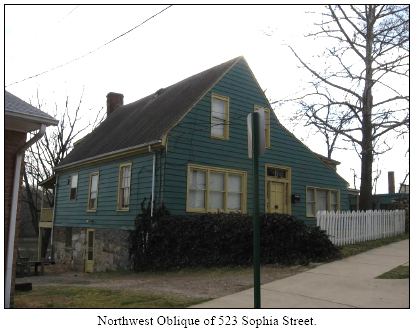
One of the biggest benefits of living in a tourist town like Fredericksburg Virginia is the fact that the entire city and surrounding countryside is covered in historical sites. Something as simple as going to work everyday finds me passing Civil War battlefields, colonial fort signs, and street upon street of landmark buildings. Every weekday morning at the crack (of-the-crack) of dawn, you will most likely find me walking down Sophia Street on my way to catch the VRE commuter rail at the Fredericksburg Train Station. One home in particular always catches my weary, bloodshot eyes as I pass by. It is the circa 1700’s house at 523 Sophia Street, certainly one of the more unusual looking residences and perhaps the oldest.
After voicing my interest in this house to my friends at the National Park Service I was directed to a local cultural resource consulting firm called Dovetail Cultural Resource Group. DCRG is a full-service, woman owned (SWAM certified) Cultural Resource management (CRM) firm. Dovetail's principals, Kerri Barile and Mike Carmody, have 25 collective years of experience conducting federal, state, and local preservation compliance work. They were hired by the property owner to conduct an intense study of the home and its history. Kerri Barile was generous enough to provide me with a copy of their findings and photographs and I am very grateful for her support.
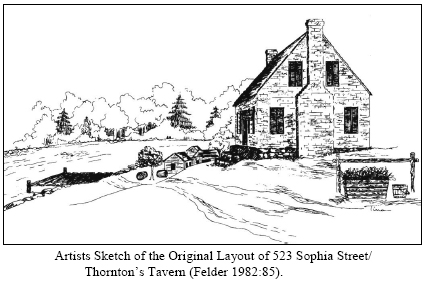
According to Dovetail’s report: “The history of…523 Sophia Street begins with the founding of Fredericksburg. The future townsite of Fredericksburg was granted to John Buckner and Thomas Royston in 1671. Though they never lived on this 2,000 acre property, they immediately leased the land to William and Sukey Livingston, which is how the area became known as ―The Leaseland from the 1670s through the 1720s. The community remained a small river enclave through the first two decades of the eighteenth century.” They added, “What is today the…523 Sophia Street property was just outside of the original town boundaries.”
In order to put the significant historical value of this home in perspective, we must first present how Fredericksburg fit into the colonial-era. The original English settlement of Fredericksburg Virginia was chartered in 1728. Named for Frederick, Prince of Wales, the town’s footprint was clustered in a fifty-acre area along the west bank of the Rappahannock River. It was originally engineered in a grid-like pattern, with wide streets that were named after British royalty. The initial plot consisted of sixty-four equally sized lots with two extra spaces for a church and a market. As the population increased, Fredericksburg found it necessary to expand the municipal boundaries. By 1759, the city had tripled its physical size, opening the door to both new merchants and settlers alike.
Many significant names from both the Colonial and Revolutionary periods called Fredericksburg home to include George Washington, Fielding Lewis, Hugh Mercer, George Weedon, John Paul Jones and James Monroe. Thomas Jefferson, although not a resident, frequented the area on a number of occasions and penned the Virginia Statute for Religious Freedom there.
Although the tract on which Fredericksburg was founded had included a frontier fort that had been established in 1676, its firsthand witnessing of military action in the fight for independence was none. It was the other Fredericksburg, of New York, that witnessed one of the first armed incidents leading up to the American Revolution. In November of 1765, two regiments of British troops arrived from Poughkeepsie and merged with another 200 Redcoats from New York City who were deployed to stop the spread of British land encroachment by local Patriots. Fredericksburg, Virginia that is, did make a significant contribution in the fight for liberty after Charles Dick teamed up with Fielding Lewis in 1775 to run the Fredericksburg gunnery. They would supply muskets for Colonial troops throughout the Revolution, while also repairing muskets captured from the British.
The story of 523 Sophia Street began long before America’s fight for independence. As Fredericksburg had worked early on to establish itself as an important port along the Rappahannock River, the city constructed a series of wharfs which became the first public river docks. Numerous warehouses developed around the waterfront to accommodate the new influx of business. The majority of these structures were located along Sophia Street.
According to Dovetail, William Byrd II visited Fredericksburg shortly after the county seat moved from Germanna. He discussed this experience in his diary where he wrote, “Colonel Willis walked me about his town of Fredericksburg. It is pleasantly situated on the south shore of Rappahannock River, about a mile below the falls. Sloops may come up and lie close to the wharf, within thirty yards of the public warehouses, which are built in the figure of a cross…Though this be a commodious and beautiful situation for a town, with the advantages of a navigable river and wholesome air, yet the inhabitants are very few. Besides Colonel Willis, who is the top man of the place, there are only one merchant, a tailor, a smith, and an ordinary keep.”
Modern dendrochronology (the science dealing with the study of the annual rings of trees in determining the dates and chronological order of past events) has showed that the home at 523 was built in 1746, making it the oldest confirmed building in Fredericksburg. It was originally a tavern and then a store before becoming a private residence. From the mid-1740s until his death in 1753, William Hunter and his nephew James ran a mercantile shop out of the old tavern building. When William passed away, he willed his property to his son James stating: “I bequeath to my son James Hunter my ferry lots with the benefit of the ferry and all houses belonging to them.” His widow, Martha Hunter, left the area with her children shortly after the death of her husband. Occupation of the parcel was then taken up by Williams‘s nephew and business partner James. Unfortunately, the partnership that had been was lost, and James soon found himself requesting payment of all the debts that were owned to him and his uncle.
Dovetail’s report outlines the decline that followed: “What was Thornton‘s Tavern had ceased to be a public venue after the property passed to James Hunter in the 1750s. Hunter discontinued the mercantile shop established by him and his uncle William, but it is likely that he continued to use the property as his residence. James also continued to own and operate the ferry. In 1771, James Hunter Junior returned to Fredericksburg to take over the land that his father left him almost 20 years earlier. However, two years later, he attempted to rent the ferry and shop as he planned to move to Britain. With the increasing hostilities between American and Britain, James apparently never went to Britain, as he advertised in the Virginia Gazette (1776) shortly after for a lost horse. Instead, James Junior attempted to revive the mercantile trade from this lot, but his new enterprise only lasted less than ten years.”
Upon the death of James Hunter Junior, the property passed to Archibald Hunter who never occupied the lot, or even lived in town. In 1814, the property was sold out of the Hunter family for the first time in almost 75 years. Joshua Long purchased the parcel which was bounded by the town wharf lot on the upper side, by the River Rappahannock on the East, by John T. Walker‘s Lott on the lower Side, and by Sophia Street on the back. The property remained in use as a residence and went on to witness (and survive) the Federal occupation and destruction that plagued the town during the Civil War. Today the home remains in remarkable shape, albeit an unusual color. It is currently used as part of an alcohol rehabilitation program and is slated for architectural restoration.
Perhaps Dovetails’s findings and recommendations best summarize how this lone, unassuming home remains an important link to the city’s past: “The building at 523 Sophia Street is an excellent example of an eighteenth century building that has been modified to fit owner needs and reoriented to comply with the new flow of a growing town. With an initial construction date of 1737, it is the oldest building in Fredericksburg. Even with a new timber frame structural system, a second half of the eighteenth century modification date still ranks among the oldest buildings in town. From a tavern to a mercantile shop and from a residence to a junk yard, the building at 523 represents the spectrum of Sophia Street and the larger changes affecting life in Fredericksburg for over three decades. Based on the architectural analysis and its historic context, it is recommended that 523 Sophia Street/Thornton‘s Tavern is both individually eligible for the National Register of Historic Places (NRHP) and is a contributing element to the Fredericksburg Historic District under Criteria A and C. The building exemplifies the city‘s growth from its earliest days through the twentieth century. Architecturally, the building is an excellent example of a modified vernacular Southern Colonial. Elements that highlight this style include the use of Berea/Aquia sandstone in the foundation and original chimney stacks, a timber frame structural system using hewn beams and pegs, and a sharply-pitched gable roof.”
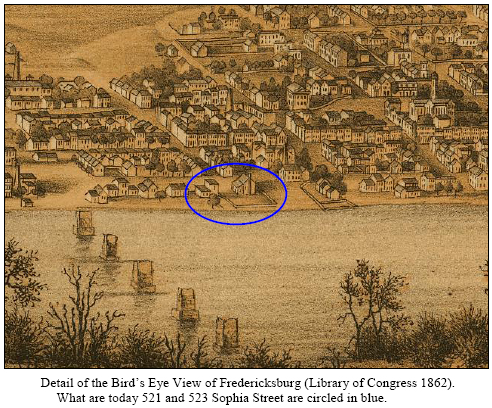
To put the historical significance of this house in perspective think of it like this…by the time that the Civil War came to Fredericksburg in 1862, this home was already 125 years-old. Today, it is 274.
Op-Ed: What would Madison think?
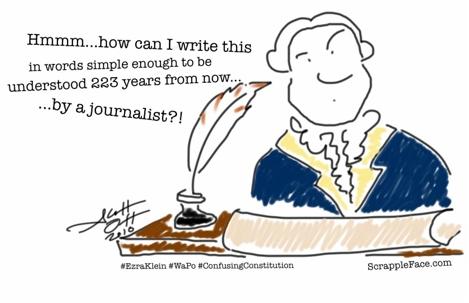
Nowadays, it seems like every politician wants to lay claim to the U.S. Constitution. Conservatives, Liberals, and Independents alike, all cite this framing document (ad-nauseum) as the foundation for their beliefs. It has become a public relations “go-to” when pitching campaign concepts to potential voters. As a result, it has also become a meaningless, predictable, and watered down reference. Campaign managers and speech writers across the country have enacted the strategy that when in doubt – refer to the Constitution.
Another common scare-tactic is to accuse your opponent’s ideas of being “Unconstitutional.” This works brilliantly as most citizens don’t walk around with a copy of the Constitution on hand. This renders them unable to challenge the claim and more likely to believe it. The unfortunate reality is that many of these candidates have absolutely no idea what they are talking about. Each party wants you to believe that THEIR defending the Constitution on your behalf while the opposition is hell-bent on trampling it.
The recent GOP debates have revealed a severe deficit in the understanding of American history. It gets worse as the current administration is also guilty of misrepresenting the Constitution on more than one occasion. Sadly, both the Democrats and Republicans have proven themselves to be woefully ignorant on this topic. And don’t forget about the fringe groups like the Tea Party and Constitutionalists who tend to treat the U.S. Constitution as some kind of sacred, religious mantra.
Perhaps these folks should take a field trip to the Center for the Constitution at James Madison’s Montpelier. The Center is a nonpartisan organization dedicated to the study and teaching of founding principles and constitutional ideals. It was established by The Montpelier Foundation in 2003 with a goal of becoming the nation's leading resource in high-quality constitutional education. The Center serves as a teaching academy, a place where professionals are immersed in an intellectual engagement with the theory and meaning of the American Constitution. Program activities take place in the Constitutional Village, where participants read, think, and discuss the ideas and innovations that underlie our nation's great experiment in self-government. According to their website:
The Center's programs vary by content, length, and audience but each are distinguished by three trademarks conducive to a constitutionally thoughtful citizenry: Constitutional thinking — using the fundamental ideas of the Constitution and the Bill of Rights as the framework for civic reasoning in a country where, to be a full member of the American democracy, one must be first a "Citizen of the Constitution." Rigorous interpretation of primary documents — as sites where the innovative concepts that animate the nation's political institutions can be encountered in their original form, so that American civic life can be preserved, restored, or reformed by its citizens. Respect for the intellectual capacity of our participants — teachers and professionals whose status as colleagues can provide the power of a community of scholars at Montpelier, inquiring into the values that make us a Constitutional People.
Nearly 10,000 professionals from all 50 states and 49 countries have participated in the Center's programs — among these are teachers, state supreme court justices, and elected officials. (Best of all, it is not polluted by any political agenda.) As a result, there is hope. People, yes regular everyday folks like you and me, are actually reading the Constitution. In 2010, with funding from the Claude Moore Charitable Foundation, the Center for the Constitution at James Madison’s Montpelier conducted a survey of Americans' understanding of the Constitution and of attitudes toward the structure and function of our government. According to these numbers it looks to me like the voters may have the upper hand.
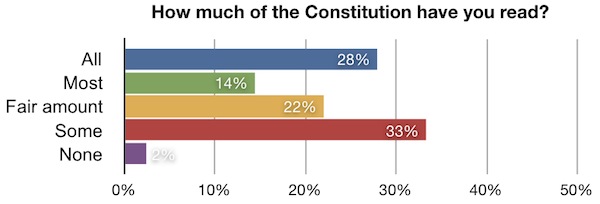
To these candidates/politicians-turned-hijackers, I simply say this: Get a copy of the Constitution. Read it from beginning to end. Read it again. Then ask one of your constituents to explain it to you.
JPJ's pad
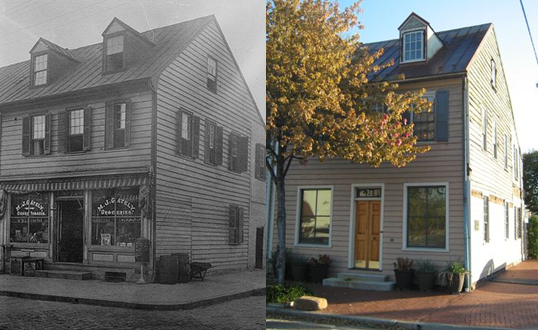
Over the next week or so I am (hopefully) going to be working on a detailed post about one of the oldest colonial-era homes that is still standing here in Fredericksburg. In the mean time, here is a short bit on one of the most frequently overlooked sites in the area. Each weekday I stumble passed this row-house in the wee hours of the morning en route to the train station. This small green frame house on the corner of Lafayette Blvd. and Caroline St. is the only house in America that Naval hero John Paul Jones called home (from 1773-1775). This house was originally owned by his late older brother William Paul, who used it for his tailoring business. Over the years it was converted from a commercial property back into a private residence. The current owner is in the process of restoring the property.
More Constitutional Conventions?
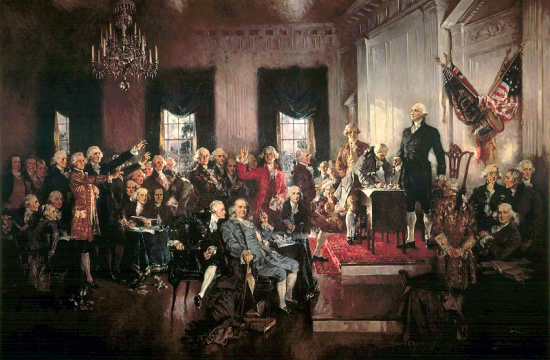
Lawrence Lessig is a Harvard Law Professor and author of Republic, Lost: How Money Corrupts Congress--and a Plan to Stop It. In his book Lessig proposes several ways to fix a government that appears incapable of fixing itself. His methods are based on those of the Founders who established a system in which the people can institute change (if they are willing to make the effort required to do so). What makes this concept pertinent to my blog is the historical aspect of his plan which calls for individual states to hold their own constitutional conventions in an effort to discuss and propose amendments that will wrangle the electoral and ruling process.
According to Lessig “Article V of the Constitution gives the states the power to demand that Congress ‘call a Convention for proposing amendments’ to the Constitution. Such amendments are only valid when ratified by 3/4ths of the states. Never in the history of the Nation has an Article V convention been called -- though we came close a century ago, when the call for a convention to make the senate elected was within one vote of the necessary two thirds. That was enough to spur Congress to reform itself, by proposing its own amendment and ending the need for a convention.” Lessig recently appeared on The Rachel Maddow Show where he explained this concept of constitutional conventions and their potential affect for change. Watch Video
The original Constitutional Convention took place from May 14 to September 17, 1787 in Philadelphia, PA. The initial goal was to address a series of ongoing problems in governing the United States of America, which had been operating under the Articles of Confederation. Some attendees, including James Madison and Alexander Hamilton, looked at the convention as an opportunity to establish a new form of government instead of reforming the old one. Delegates elected George Washington to preside over the meetings, which ultimately resulted in the United States Constitution.
While at the convention Madison stated, “I consider the difference between a system founded on the legislatures only, and one founded on the people, to be the true difference between a league or treaty and a constitution.” The fact that these framers foresaw the potential for politics to become what it is today speaks volumes about their intuition and understanding of the nature of man. I think it’s fair to say that no single candidate or political party can solve the problems of an entire government. Simply relying on elections isn't the answer. Perhaps these conventions would enable the people to enact amendments that would take back control of a system that was supposed to work for them.









